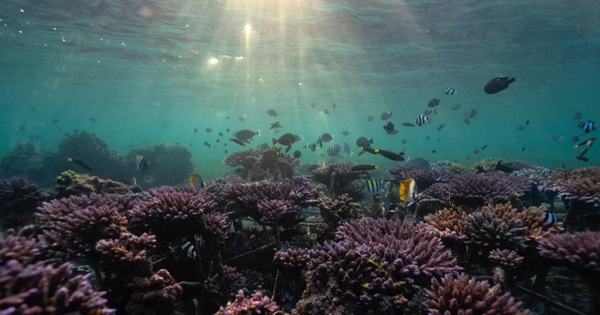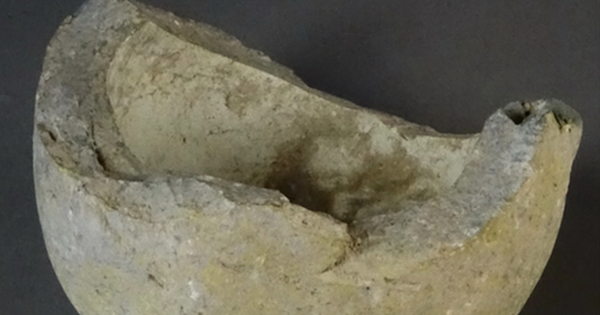Why are deep sea animals huge in size?
Many large deep-sea animals outnumber their relatives elsewhere, perhaps for environmental reasons or for survival purposes.

A 3-year-old boy in Los Angeles observes spider crabs at the Aquarium of the Pacific in Long Beach, California, USA, in 2004. Photo: Robyn Beck/AFP
In the deepest and coldest parts of the ocean, marine organisms – mainly invertebrates – can reach enormous sizes. Squids, sea spiders, worms and many other animals have grown to outnumber their relatives around the world. This phenomenon is called gigantism.
For example, giant squid (Mesonychoteuthis hamiltoni) in sub-Antarctic waters about 14 times as long as arrow (Nototodarus sloanii) in New Zealand. Deep in the Pacific Ocean, there is a sponge as big as a minivan. What is it in the deep and cold sea that makes the creatures grow so big? According to the scientific community, it is possible that survival requires it, and the elements in extremely cold waters also allow gigantism to take place.
In the deepest parts of the oceans, resources are extremely limited, like in island ecosystems, according to research in the journal Nature. Biogeography. Most of the food comes from the shallower waters, and only a small part of it ends up in the deep sea. When food is scarce, massive size gives it a big advantage, says Alicia Bitondo, an expert at the Monterey Bay Aquarium in California, USA.
Larger animals can travel faster and farther in search of food or mates. They also have a more efficient metabolism and better food storage capacity. So when things like large carcasses sink into the deep sea, the massive predators can eat more and store that energy for longer periods of time.

The Greenland shark has a very slow metabolism. Image: Dive Magazine
Cold temperatures in the deep sea can also promote gigantism by significantly slowing down the animal’s metabolism. Organisms in this ecosystem often grow and mature very slowly, such as the Greenland shark (Somniosus microcephalus), Bitondo said.
Greenland sharks can grow up to 7.3 meters long and weigh 1.4 tons, but their growth spans many centuries. They grow about 1 cm per year and reach reproductive age only when they have lived for about 150 years. Greenland sharks can live so long and reach such large sizes in part because there are no predators in the deep sea.
Before encountering the “giants” in the deep sea, humans have encountered them near the South Pole. Around Antarctica, gigantism occurs closer to the surface. There are sea slugs, sponges, worms, sea spiders, even giant single-celled creatures living here. They are within diving range, only about 9 meters deep, according to Art Woods, a professor at the University of Montana.
“Maybe something in Antarctica allowed the giants to live closer to the water,” Wood said. He thinks gigantism in Antarctica may be related to the oxygen supply in the frigid waters that surround the continent.
Such peri-polar waters have high concentrations of oxygen, according to the US Geological Survey (USGS). However, animals in this environment consume oxygen very slowly because cold water lowers the metabolic rate, Woods explains. Since the abundant oxygen supply far exceeds the animal’s needs, it is possible that growth limits have been broken.
“The environment allows them to grow larger in body size and tissue size without being deprived of oxygen,” Woods said. An abundant supply of oxygen does not necessarily spur marine life to become large, but it does.
Even with the polar giants, however, there seems to be a limit to their size. In a study published in the journal Proceedings of the Royal Society B In 2017, Wood and colleagues studied giant Arctic sea spiders that can grow up to 30.5 centimeters in length.
The team found that larger sea spiders had lower oxygen levels in their bodies. Aerobic metabolism depends on the oxygen supply. If oxygen levels get too low, tissues will suffer. The drop in oxygen levels in large sea spiders suggests that something has changed in the balance between oxygen supply and demand. “You can imagine that spiders get to a size where they can’t get enough oxygen. Then the larger ones start to hit the limit line,” Woods said.
Although there are many theories about the different factors that created the sea giants, none is certain as to the exact mechanism underlying the dramatic evolutionary changes in body size. “In biology, we would say that nothing is certain,” Woods said.
Thu Thao (According to Live Science)
at Blogtuan.info – Source: vnexpress.net – Read the original article here



